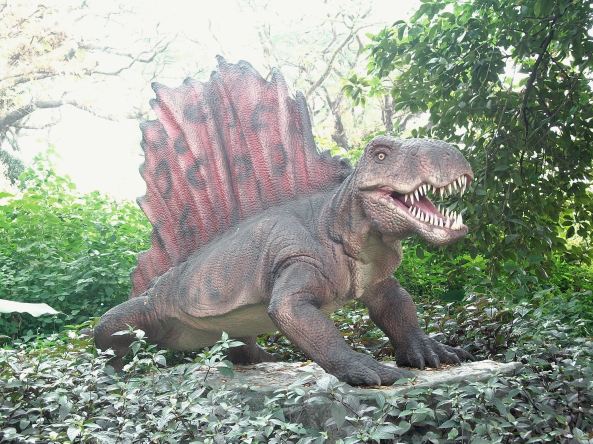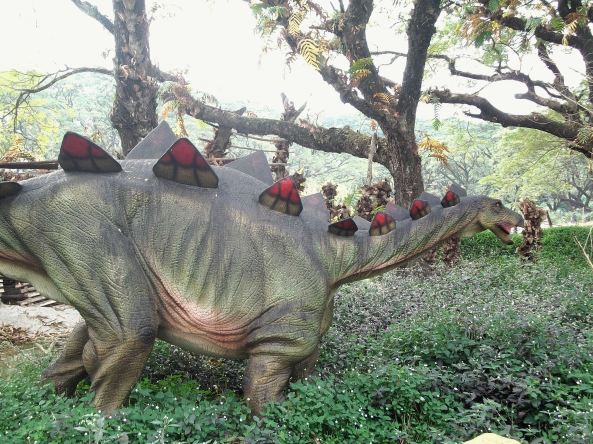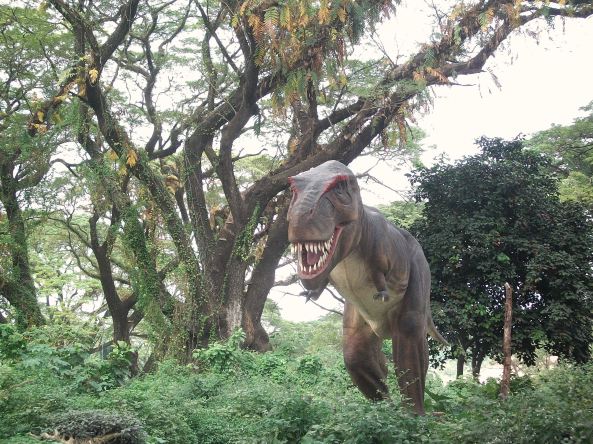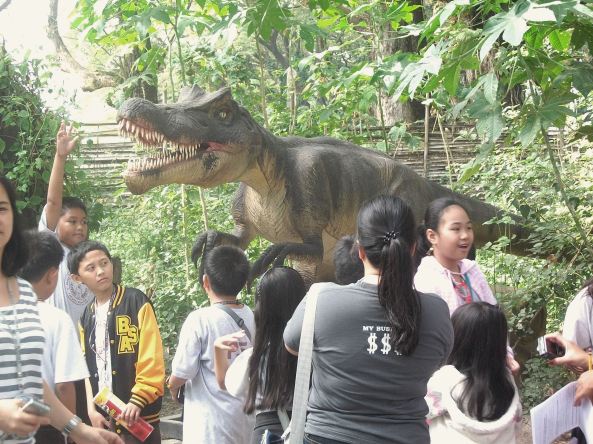.
On 2010, an international scientific panel opined after a comprehensive review of all the available evidence that the Cretaceous-Tertiary mass extinction, which wiped out the dinosaurs, was caused by an asteroid colliding with Earth. The abundance of iridium, very rare in Earth’s crust and very common in asteroids, in geological samples from the time of the extinction is a key piece of evidence. One long count of the Mayan calendar ended with the destruction of the dinosaurs some say.
Some in the cyberspace attribute the “end of the world” thing with the end of the current millennium of the Mayan calendar that so coincides with some planetary alignment that may impact Earth. On the scientific side of the coin, the US National Aeronautics and Space Administration (NASA) said that “there are no planetary alignments in the next few decades and even if these alignments were to occur, their effects on the Earth would be negligible. One major alignment occurred in 1962, for example, and two others happened during 1982 and 2000. Each December the Earth and sun align with the approximate center of the Milky Way Galaxy but that is an annual event of no consequence.”
Remember Y2K? The hoax that said computers will shut down right after December 31, 1999, where governments and companies could not operate and the world would fall into chaos? Twelve years later, another end to a millennium will happen on December 21, 2012, the Mayan Calendar. Again, only the millennium will end, not the world. Then goes for a 5,125.36 year journey for the Mayans. They are not extinct unlike the dinosaurs, only the empire vanished. In fact, there are about 5 million Mayans living today in Guatemala and southern Mexico. In the Dinosaurs Island, the Mayan Calendar was of no use.
.
LET’S GO TO THE DINOSAURS ISLAND…..
.

DIMETRODON
[NAME MEANS: Two-measures Tooth; PERIOD: Permian period 280-245 million years ago; WHERE: Texas & Oklahoma, USA and Nova Scotia, Canada; FOSSIL DIMENSIONS: 3.5 meters long.]
Dimetrodon was a sail-backed, meat-eating animal long before the dinosaurs evolved. It had a large sail-like flap of skin along its back, dense with blood vessels. The sail was supported by long, bony spines, each of which grew out of a separate spinal vertebra (a bone in the back). The sail may have been athermoregulatory structure, used to absorb and release heat. The sail may have also been used for mating and dominance rituals, and/or for making it look larger than it was to predators. Dimetrodon had sharp teeth and clawed feet.
.

STEGOSAURUS
[NAME MEANS: Roof Lizard; PERIOD: late Jurassic 150 million years ago; WHERE: Western North America and Europe (Portugal); FOSSIL DIMENSIONS: 9 meters long, 3.5 meters high.]
The 17 bony dorsal plates arranged alternately along its spine may have served as armor, a mating display, heat regulation, or all three. These plates may have allowed Stegosaurus to appear larger, thereby discouraging enemy attack.
.

BRACHIOSAURUS
[NAME MEANS: Arm Lizard; PERIOD: late Jurassic 156 million years ago; WHERE: Africa (Tanzania), USA (Colorado), and Europe (Portugal); FOSSIL DIMENSIONS: 20-30 meters long, 12 meters high.]
Brachiosaurus was one of the tallest and largest dinosaurs yet found. It had a long neck, small head, and relatively short, thick tail. Brachiosaurus was about 85 feet (26m) long, and weighed about 33-88 tons. Brachiosaurus walked on four legs and, like the other Brachiosaurids and unlike most dinosaurs, its front legs were longer than its hind legs. Brachiosaurus was a herbivore, a plant eater. It was a sauropod, whose intelligence was the among the lowest of the dinosaurs.
.

VELOCIRAPTOR
[NAME MEANS: Swift Thief; PERIOD: late Cretaceous 75 million years ago; WHERE: Mongolia; FOSSIL DIMENSIONS: 2 meters long.]
Velociraptor was a fast-running, two-legged (bipedal) dinosaur. This meat-eater had about 80 very sharp teeth. This predator had an s-shaped neck, arms with three-fingered clawed hands, long thin legs, and four-toed clawed feet.
.

TYRANNOSAURUS
[NAME MEANS: Tyrant Lizard King; PERIOD: late Cretaceous period; WHERE: North America: New Mexico, Colorado, Montana, Wyoming, Alberta; FOSSIL DIMENSIONS: 15 meters long, 6 meters high.]
As the last great carnivore of the Cretaceous Period, Tyrannosaurus rex was an efficient killer stalking the North American landscape. With a specially strengthened nose structure, it could deliver bone splintering, crushing bites to both prey and combatants, including others of its own species.
.
WERE THERE DINOSAURS IN THE PHILIPPINES?
The Philippines started to take shape in the mid-Oligocene, about 30 million years ago. This makes the Philippines a very young archipelago compared to Europe, North America and other continents where dinosaurs have been found. Dinosaurs had become extinct by the end of the Cretaceous period 65 million years ago. So to the question, did the Philippines have dinosaurs? The answer is NO.
But in the 7,107 islands comprising the Philippine archipelago, there exist one Dinosaurs Island.
THE PHILIPPINES 1ST ANIMATRONICS DINOSAUR PARK, DINOSAURS ISLAND is at Clark Land, Picnic Ground, Clark Pampanga. All pictures here were taken from this park during the educational field trip of my son Jonmer who celebrated his 7th birthday a day before the trip. I still have three children who must see the park’s latest animatronics technology similar to the techniques used in the movies, that enable movement of dinosaurs display with roar effects.
.
LET’S GO BACK TO THE DINOSAURS ISLAND…..
.

BARYONYX
[NAME MEANS: Heavy Claw; PERIOD: early Cretaceous 125 million years ago; WHERE: England: Surrey, south of London; FOSSIL DIMENSIONS: 9 meters long, 3.6 meters high]
Baryonyx was an unusual theropod with huge 1 foot (30.5 cm) long claws on its hands, and long, narrow, crocodile-like jaws with 96 small, serrated teeth. It has a small crest on its snout. Baryonyx was a meat-eater, a large predator that ate fish, and whose intelligence was high among the dinosaurs.
.

PARASAUROLOPHUS
[NAME MEANS: Crested Lizard; PERIOD: late Cretaceous 76 million years ago; WHERE: North America: Alberta, Canada and New Mexico and Utah in the USA; FOSSIL DIMENSIONS: 9-10 meters long, 3 meters high.]
Parasaurolophus was a long-crested, duck-billed dinosaur. It weighed about 2 tons. Parasaurolophus was a herbivore, eating pine needles, leaves, and twigs; was an ornithopod, whose intelligence was midway among dinosaurs. It walked and ran on two legs, and was relatively fast dinosaur.
.

TRICERATOPS
[NAME MEANS: Three-horned Face; PERIOD: late Cretaceous 65 million years ago; WHERE: North America: Colorado, Montana, South Dakota, Alberta, Saskatchewan; FOSSIL DIMENSIONS: 7.5 meters long, 2.9 meters high.]
Despite appearances, Triceratops was no gentle, plant-eating giant. Many fossil records show damage to Triceratops bones that could have occurred in combat with rivals or predators. Aside from inter-group displays of domination and as weapons, horns could also be used in mating displays. The neck frill would have offered some protection against predatory bites and may have regulated body temperature.
.

WUERHOSAURUS
[NAME MEANS: Wuerho Lizard; PERIOD: early Cretaceous 135 million years ago; WHERE: Xinjiang, China; FOSSIL DIMENSIONS: 8 meters long, 2 meters high.]
Wuerhosaurus was a stegosaurid (related to Stegosaurus) that had bony plates along its back and 4 bony spikes at the tip of its tail. It had a shorter body and wider hip bones than other stegosaurids.
.

….sorry my son remembered Spinosaurus of Jurassic Park III and wants to represent his beloved T-rex.
SPINOSAURUS
[NAME MEANS: Spiny Lizard; PERIOD: middle Cretaceous 95 million years ago; WHERE: Africa: Egypt and Morocco; FOSSIL DIMENSIONS: 12-17 meters long.]
Spinosaurus was a huge meat-eating dinosaur that had a series of spines on its back. It was bipedal (it walked on two legs), Spinosaurus’ huge sail may have been used for regulating its temperature. It was a carnivore, a meat-eater with huge teeth and powerful jaws. It ate dinosaurs and large fish. Spinosaurus walked on two muscular legs and was relatively fast, two-legged runner. It was an advance theropod, whose intelligence was high among the dinosaurs.
(Reference: Dinosaurs Island)
.
IN THE PENULTIMATE, MAYAN ELDERS DO NOT PROPHESY THAT EVERYTHING WILL COME TO AN END ON DECEMBER 21, 2012. OTHER PEOPLE WRITE ABOUT PROPHECY IN THE NAME OF THE MAYA. I follow the Gregorian calendar that has December 22 up to 31. And another Mayan Long Count of 5,125 years will start after December 21, 2012. This penultimate thought will be deleted on December 22. Should I be wrong, no one will be around to laugh at me.
.
Book now on this link and get automatically 10% discount. Regular rate is P350 while students up to college is P300 for private school and P250 for public.

.
Ocean Adventure in Subic is always a combination trip with Clark Land Pampanga.


